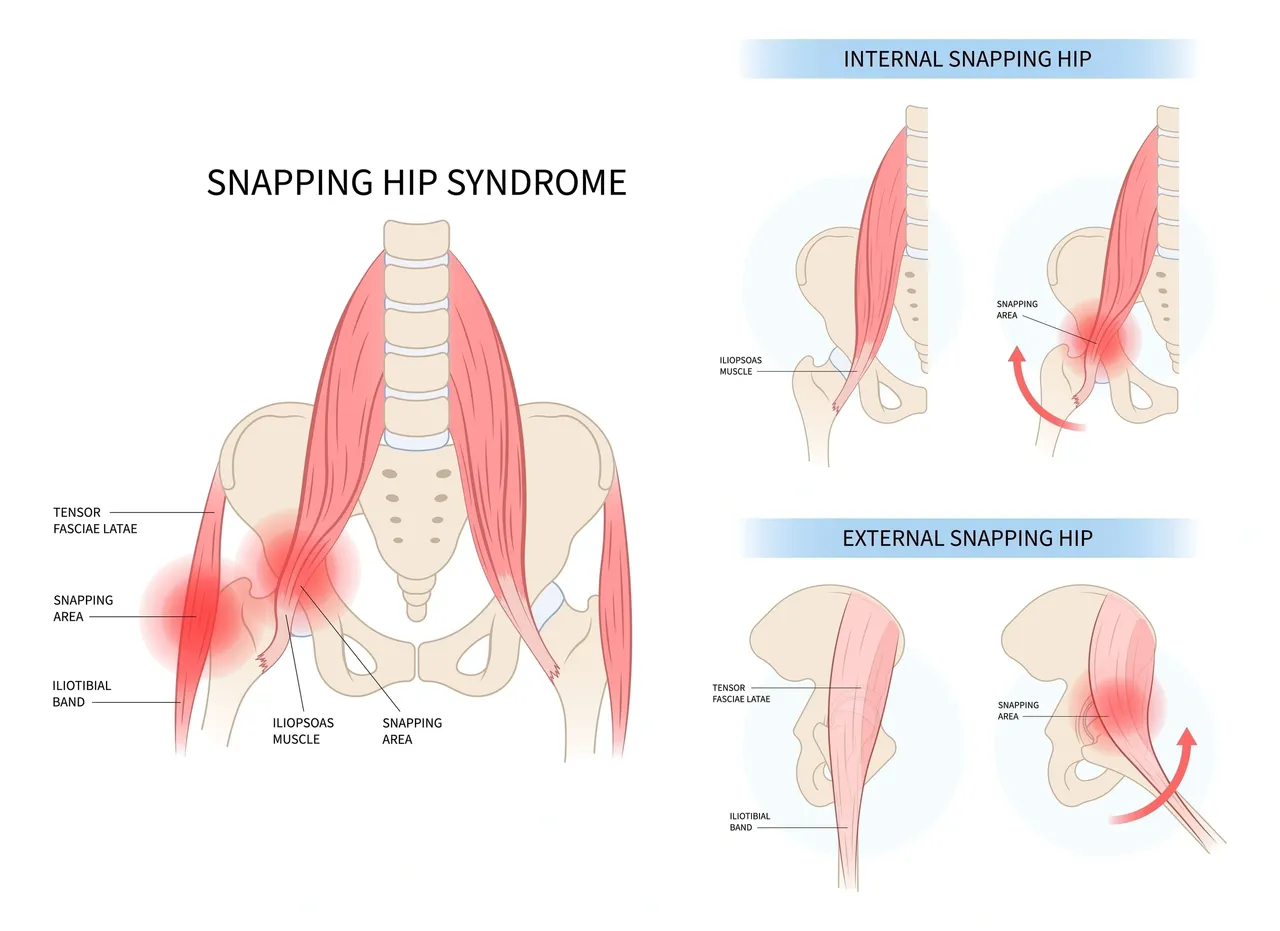We are Douglas County’s highest rated physical therapy clinic. Just check out our google reviews! People from Roseburg, Winchester, Winston, Green, and Sutherlin love our services. Now continue to our article to read more!
Snapping hip syndrome, also known as coxa saltans, is a condition where you feel a snapping sensation or hear a popping sound when you move your hip joint. This condition can be painful and uncomfortable, and it may interfere with your daily activities. In this blog article, we will discuss the causes, symptoms, and treatments of snapping hip syndrome.
Causes of Snapping Hip Syndrome Snapping hip syndrome can be caused by a variety of factors, including:
- Tendons or ligaments that rub against the bones: When the tendons or ligaments around your hip joint become tight or inflamed, they can rub against the bones, causing a snapping sensation.
- Hip joint structures that are abnormally shaped: If the structures around your hip joint, such as the labrum or the femoral head, are abnormally shaped, they can cause snapping.
- Overuse or repetitive motion: Activities that require repetitive motion of the hip joint, such as running, dancing, or gymnastics, can cause snapping hip syndrome.
- Trauma: A sudden impact or injury to the hip joint can cause snapping hip syndrome.
Symptoms of Snapping Hip Syndrome The primary symptom of snapping hip syndrome is a snapping sensation or popping sound in the hip joint. You may also experience pain or discomfort in the hip area, particularly when you are engaging in activities that require hip movement.
If the snapping hip syndrome is caused by an underlying condition such as hip impingement or a labral tear, you may also experience stiffness, limited range of motion, and weakness in the hip area.
Treatment of Snapping Hip Syndrome The treatment for snapping hip syndrome depends on the underlying cause and the severity of the symptoms. Some common treatment options include:
- Rest: Resting the hip joint and avoiding activities that cause snapping can help reduce inflammation and allow the tissues to heal.
- Ice and Heat: Applying ice to the affected area can help reduce inflammation and pain, while applying heat can help improve blood flow and promote healing.
- Physical Therapy: A physical therapist can work with you to improve the flexibility and strength of the muscles around the hip joint, which can help reduce snapping and improve hip function. Call OrMobility Physical Therapy & Performance, Roseburg’s only Mobile Physical Therapy clinic as of 2023 for a free phone consultation.
- Medications: Over-the-counter pain medications such as ibuprofen or acetaminophen can help reduce pain and inflammation associated with snapping hip syndrome.
- Surgery: In severe cases where other treatments have been ineffective, surgery may be necessary to repair or remove damaged tissues around the hip joint.
Preventing Snapping Hip Syndrome Preventing snapping hip syndrome involves taking steps to reduce the risk of injury or overuse of the hip joint. This may include:
- Maintaining a healthy weight: Excess weight can put added strain on the hip joint, making it more susceptible to injury.
- Warming up and stretching: Before engaging in activities that require hip movement, it is important to warm up the muscles and stretch the hip joint to reduce the risk of injury.
- Using proper technique: When engaging in activities that require hip movement, it is important to use proper technique to reduce the risk of injury.
- Rest and Recovery: After engaging in activities that require hip movement, it is important to rest and allow the muscles and tissues to recover before engaging in the activity again.
In conclusion, snapping hip syndrome can be a painful and uncomfortable condition, but with proper treatment and prevention strategies, it can be managed effectively. If you are experiencing snapping hip syndrome symptoms, it is important to consult with a healthcare professional to determine the underlying cause and develop an appropriate treatment plan.



